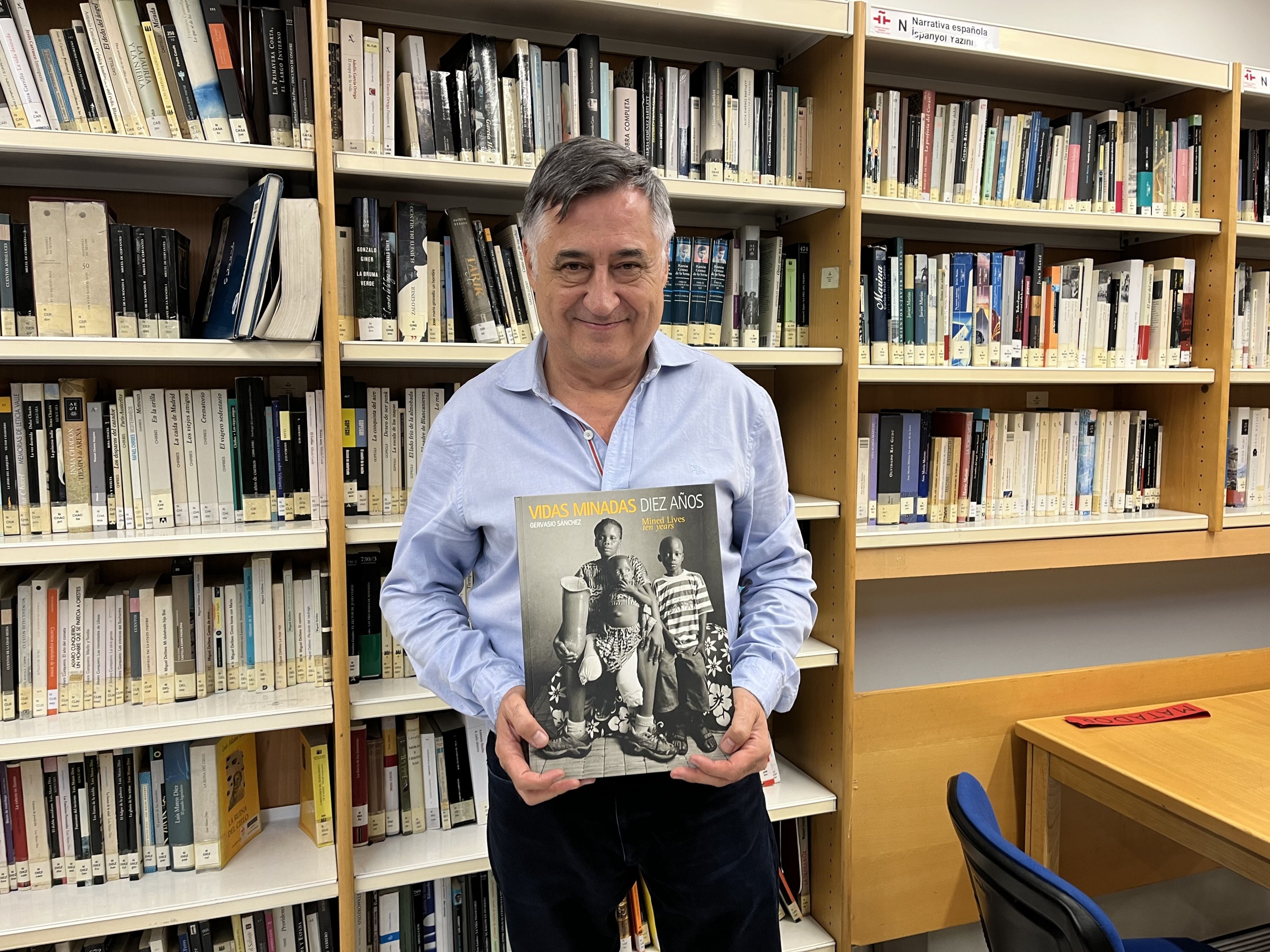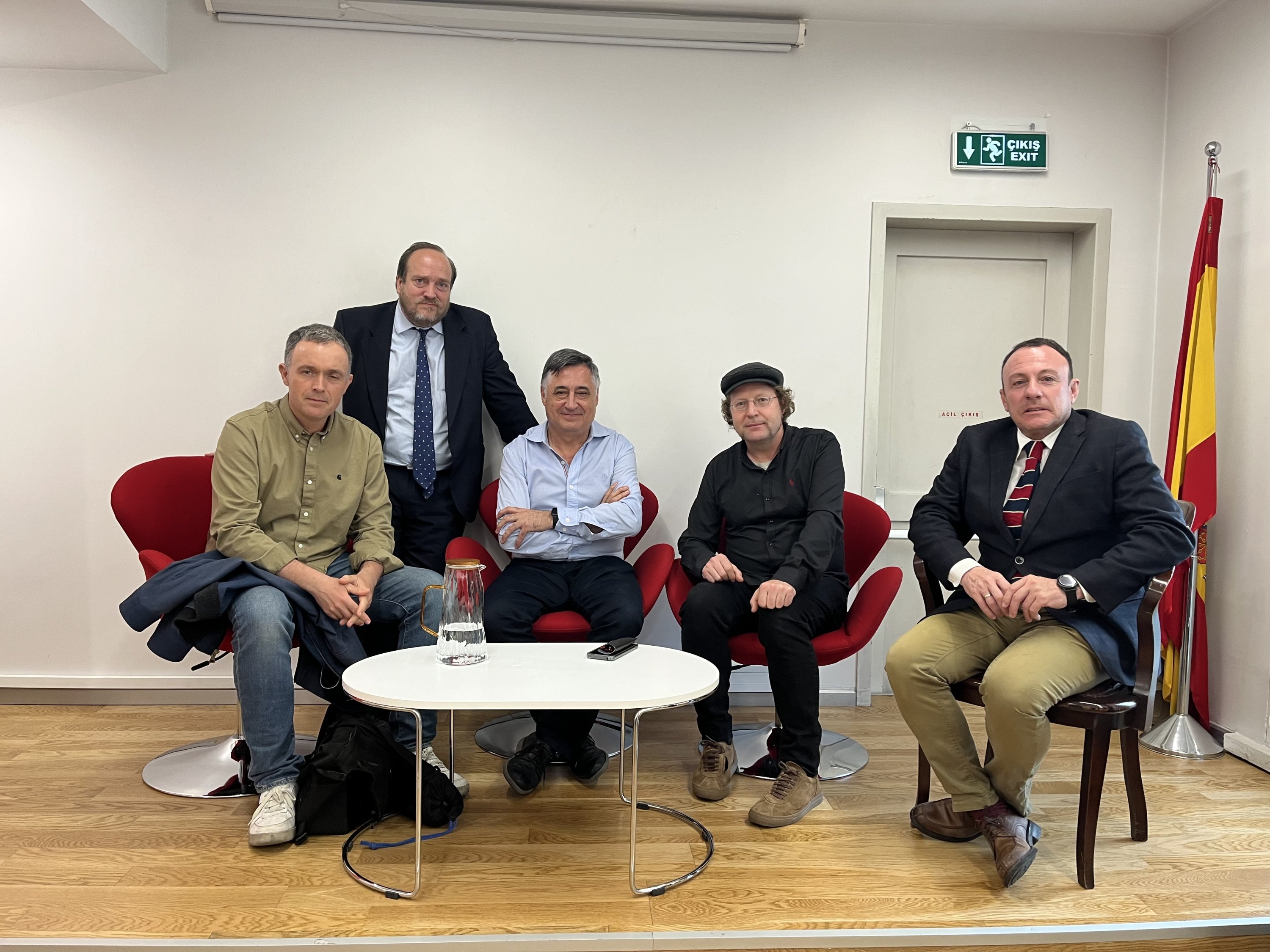© Turkuvaz Haberleşme ve Yayıncılık 2026
Amid the vibrant energy of Istanbul, the acclaimed Spanish photojournalist and writer Gervasio Sanchez revealed his artistic odyssey through his arresting and poignant photographs.
These images, which have garnered numerous awards throughout his illustrious career, offer a rare and powerful glimpse into the human cost of war and political upheaval. With his unique artistic vision, he captures the essence of human struggle in times of conflict, producing records that are both evocative and profound.
The attendees were treated to a mesmerizing voyage through time and space as they delved into the multifaceted works of Sanchez. From the war-torn Balkans of the '90s to the enchanting landscapes of Southeast Asia, and from the vibrant cultures of Latin America to the vast expanses of Sub-Saharan Africa, the artist's creations covered a panoramic canvas of human history.
Sanchez's artistry is a testament to his deep-seated passion for shedding light on some of the most pressing issues of our time. The haunting images of forcibly disappeared persons, the chilling reminders of anti-personnel mines, and the poignant representations of women violence all bore witness to his unyielding commitment to social justice.
The event was presented with the title of "Una mirada audaz" ("A daring look") and organized by the Embassy of Spain in Istanbul with the collaboration Cervantes Institute. Sanches was joined by the cultural adviser of the Spanish Embassy, Jose Luis Martin Yagüe, as well as journalists Mikel Ayestaran and Ilya Topper.
The conversation at the event was a thoughtful blend of human and artistic content, making for a captivating and engaging experience for all in attendance.

"Who would have thought that 43 years after I came to Istanbul as a tourist during a military, de facto government in the 1980s, I would come to give a lecture at the Cervantes Institute? I am really excited because first of all, Türkiye is a country that I love, and second, it is quite surprising and motivating to see that people here are interested in my work," he shared in accounts of being in Istanbul.
"If I wasn't a photographer, I don't know what I would be. A photographer and journalist, that is. Since childhood, I wanted to be a journalist. From the age of 14, when people asked me what I wanted to be, I would say I wanted to be a journalist. Eventually, I achieved my goal. When I turned 18, I wanted to specialize in the military field as both a photographer and a journalist. I also achieved that goal. I am lucky that no harm has come to me in any of the wars, although I have lost my closest friends in those wars," he explained how he started his career.
Imagine the person who takes photos that are hard to digest even when you see them, witnessing the pains of the people firsthand. For this, his encounters with the moments of life give way to a captivating perspective, creating a shocking effect on the viewer, completely shattering the concepts of beauty and ugliness, and hitting the truths to the viewer's face with a hair-raising perspective.
"This situation requires working with a great sense of responsibility and producing good work. I am someone who always tries to take their work to the next level because I have a great responsibility. We are the communicators of pain, the forgotten, the violence, and the people who bury their pains deep within themselves. Of course, no one knows what is going on in these people's inner worlds," he added.
As he weathered the trials of his arduous mission, he contemplated the seed of inspiration that had first driven him to embrace this vocation and found solace in the purpose that had guided him all these years.

"I am 63 years old, and I started this profession at a very young age. What motivates me to continue in this profession is my belief that this profession will help improve people's thinking and help them understand the history of suffering. I believe it will contribute to people empathizing more with victims, evaluating history more critically, and demanding that governments fulfill their responsibilities to prevent violence. I believe that the purpose of my profession is to keep a record of history for the betterment of the world," he said.
Sanchez's work has been published in major newspapers and magazines around the world, including The New York Times, The Guardian, and National Geographic. He has also published several books, including "Vidas Minadas," ("Mined Lives") which focuses on the victims of land mines, and "La Vida de un Fotografo," ("The Life of a Photographer") a memoir of his experiences as a photojournalist.
Besides his photographic work, Sanchez is a vocal advocate for human rights and social justice. He has received numerous awards and honors for his work, including the World Press Photo Award in 1989, the Ortega y Gasset Award in 1997, and the National Photography Award of Spain in 2009.
Through his work, he has highlighted the experiences of those who are often forgotten or overlooked and has challenged us to confront the realities of conflict and its impact on individuals and communities.
